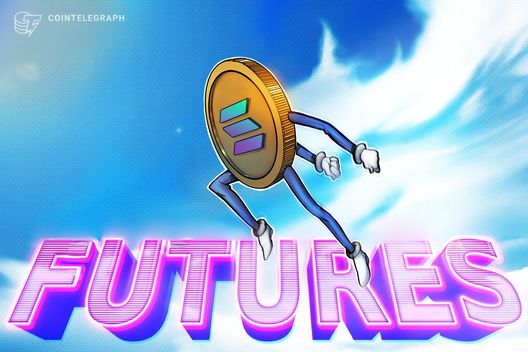

Solana (SOL) has recently exhibited a concerning market signal: its perpetual futures funding rate has turned negative. This development suggests a shift in sentiment among traders, with short (sell) positions gaining more traction than leveraged long positions. The question now is whether this bearish signal indicates a potential drop to $180, a level SOL has struggled to maintain since late May 2025.
A negative funding rate in perpetual futures contracts means that those holding short positions are paying fees to those holding long positions. This scenario typically arises when there are more traders betting against the price of an asset than those betting on it. For SOL, this marks a relatively rare occurrence, as cryptocurrency traders generally lean towards optimism. The negative funding rate highlights a lack of confidence among bullish investors and a growing demand for short positions, negatively impacting the overall market sentiment. As of July 8, 2025, the SOL perpetual futures funding rate has slipped into negative territory, currently at -0.0006%.
Several factors contribute to this shift in sentiment. One concern is the increasing competition from Ethereum's layer-2 ecosystem. While Solana boasts an integrated user experience, some analysts believe that the rapid expansion of Ethereum's layer-2 solutions has eroded Solana's competitive edge. Additionally, institutional players continue to avoid Solana due to concerns surrounding maximum extractable value (MEV).
Despite these challenges, Solana has demonstrated resilience and innovation. Jito, Solana's largest decentralized application (DApp), has seen a 12% increase in total value locked (TVL) since January 2025, holding 17.92 million SOL. Jito offers MEV-optimized staking and integrated decentralized finance services, showcasing Solana's ongoing development beyond just token launch platforms. Furthermore, Solana's staking ratio stands at 66.5%, indicating that a significant portion of SOL tokens are not readily available for sale on exchanges. The annualized staking yield of 7.3% provides a strong incentive for token holders to stake their coins. In Q2 2025, Solana's revenue even outpaced Ethereum and Tron, according to data from SolanaFloor.
Technical analysis reveals that SOL is consolidating below the $180 level, facing resistance as bulls attempt to maintain momentum. SOL has struggled to maintain momentum above $180, suggesting resistance at these levels. The Relative Strength Index (RSI) shows elevated readings that often precede pullbacks in trending markets. If selling pressure persists, SOL may drop below its current support level of $142.59, potentially falling toward $123.49. A bullish reversal, however, could trigger a rebound toward $171.88.
Solana's price prediction remains uncertain, with various sources offering different perspectives. Short-term predictions for July 2025 suggest that Solana's price may remain relatively range-bound, with a potential low of $130, an average price near $150, and a possible high of $165. If SOL breaks above the $180–$188 zone, a potential rally toward $210–$220 could occur. However, failure to gain traction could see a retest of $160 support.
Looking further ahead, forecasts for the end of 2025 vary widely. Some analysts predict that SOL could range between $175 and $350. DigitalCoinPrice projects an average price of $315.20 in 2025, while Changelly is more bearish, with an average prediction of $166.88. CoinCodex suggests SOL could average $184.81 in 2025. Under favorable conditions, SOL could push beyond its previous all-time high and reach up to $400 by the end of 2025, while regulatory pressures or technical issues could lead to a drop toward a potential low of $250.
In conclusion, the negative funding rate for SOL futures serves as a warning sign, indicating potential selling pressure and a lack of confidence among traders. While Solana faces challenges such as competition from Ethereum's layer-2 solutions and institutional concerns, it also demonstrates resilience and innovation through its growing DeFi ecosystem and strong staking ratio. The short-term price action will likely depend on whether bulls can reclaim key support levels and trigger a breakout. Whether $180 becomes the next stop for SOL remains to be seen, but the current market dynamics suggest a cautious approach.